Effective Timber Marketing Strategies
- September 19, 2024
- 0 comment
The forestry industry is a dynamic and multifaceted sector, with timber being one of its most valuable products. Employing effective timber marketing strategies is essential to enhance the profitability of timber sales, enabling both large and small landowners to maximize their returns. These strategies must prioritize sustainability and compliance with legal regulations, ensuring long-term viability for the industry.

This discussion will cover essential timber marketing strategies, highlighting the significance of market research, various sales methods, pricing factors, and the increasing role of sustainability in contemporary timber marketing.
List of Timber Marketing Strategies
- Understand the Timber Market
- Do Comprehensive Market Research
- Try Various Sale Methods
- Know the Right Timber Pricing
- Sustainable Timber Harvesting
- Choose Wisely for Marketing Channels
- Value-Added Products and Services
- Build Relationships with Buyers
- Learn Timber Marketing in Digital Age
Timber Marketing Strategies
1. Understand the Timber Market
Understanding the timber market is the foundation of any effective marketing strategy. Timber markets are influenced by numerous factors such as demand and supply, local economic conditions, and environmental regulations.
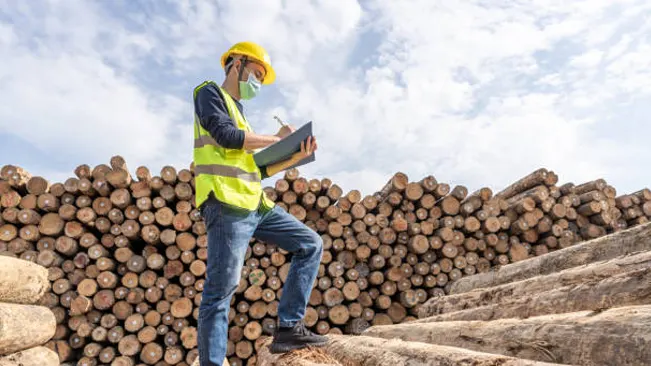
Market Trends
Keeping track of current market trends helps in identifying the best times to sell timber and determining what types of timber are in high demand.
Supply and Demand
Local and global demand for different timber species can fluctuate based on industries such as construction, paper, and furniture manufacturing.
2. Do Comprehensive Market Research
Effective timber marketing strategies begin with comprehensive market research. Understanding the competitive landscape and customer preferences is key to positioning timber products correctly.
- Competitive Analysis: Identifying the major players in the market helps to understand pricing benchmarks and supply chains.
- Customer Preferences: Different industries may prefer specific timber types or qualities, and understanding these preferences can guide the marketing and sale process.
Market research can help timber sellers align their production and sales strategies with the demand patterns of various industries.
3. Try Various Sale Methods
There are various methods for selling timber, and the right choice depends on the scale of the operation and the landowner’s objectives. The main sales methods include:
- Lump-Sum Sales: The buyer pays a fixed amount for the standing timber, regardless of the amount harvested. This method reduces the landowner’s risk but may not yield the highest return.
- Pay-as-Cut Sales: In this method, the buyer pays for the timber based on the actual volume harvested, offering flexibility and potentially higher profits.
- Sealed Bid Sales: Timber is sold through a competitive bidding process, which often results in higher sale prices if there is high demand.
- Negotiated Sales: The landowner and buyer negotiate the terms and pricing directly, offering flexibility and control over the sale.
Each of these methods has its benefits and drawbacks, and landowners need to choose the approach that aligns best with their financial goals and risk tolerance.
4. Know the Right Timber Pricing
Determining the right price for timber is a crucial aspect of any marketing strategy. Timber prices can vary greatly depending on factors like species, size, quality, and market demand.
Species and Size
Different species of trees have varying market values, with some species commanding higher prices due to demand or rarity. Additionally, larger, mature trees often yield better timber and, as a result, tend to fetch higher prices in the market.
Timber Quality
The grade and quality of the timber can significantly impact its price. For instance, higher-grade timber used in furniture-making will command a premium compared to lower-grade timber used for pulp.
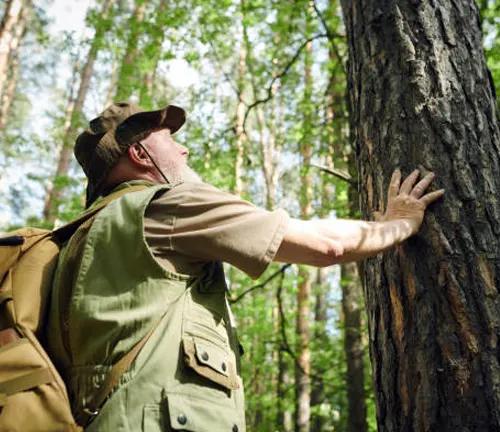
Market Conditions
Timber prices fluctuate with supply and demand, and it’s important to monitor local and global markets to optimize pricing.
5. Sustainable Timber Harvesting
Sustainability has become a critical aspect of timber marketing as consumers and industries increasingly demand environmentally responsible practices.
Forest Certification
Obtaining certification from organizations like the FSC or SFI boosts timber products’ marketability by showcasing sustainable harvesting and promoting forest health.
Selective Harvesting
Sustainable practices such as selective harvesting ensure that the forest remains productive for future generations. This strategy allows for the removal of specific trees while preserving the overall health and biodiversity of the forest.
Reforestation Initiatives
Landowners can boost the marketability of their timber by participating in reforestation projects that help restore ecosystems and contribute to the fight against climate change.
6. Choose Wisely for Marketing Channels
Choosing the right marketing channels is essential to reaching potential buyers. Depending on the scale of the operation, landowners can opt for local markets or explore broader opportunities through online platforms.
Local Buyers
Selling to local sawmills, lumber yards, or furniture manufacturers is often the simplest approach for small to medium-sized timber operations.

Export Markets
For larger-scale operations, exporting timber can open up opportunities in international markets where demand for high-quality timber is strong.
Online Timber Sales Platforms
In today’s digital world, online platforms allow timber sellers to reach a global audience. These platforms provide transparency in pricing, improve buyer-seller communication, and increase competition.
Utilizing a mix of local and global marketing channels can help timber sellers diversify their sales and increase their profits.
7. Value-Added Products and Services
Landowners and timber sellers can maximize the value of their timber by offering value-added products and services. This not only enhances the marketability of their timber but also helps them reach niche markets.
- Kiln-Dried Lumber: Providing kiln-dried lumber, which is processed to remove moisture, can attract higher-paying customers in the construction and furniture industries.
- Custom Milling: Offering custom milling services allows landowners to provide timber products tailored to the specific needs of customers, making their products more desirable.
- Eco-Friendly Products: Marketing eco-friendly timber products that align with sustainability trends can open doors to premium markets.
Value-added services create differentiation and enable timber sellers to offer unique products that appeal to a broader customer base.
8. Build Relationships with Buyers
Establishing strong relationships with buyers is one of the most important long-term strategies in timber marketing. Building trust with reliable buyers can lead to repeat sales and better deals over time.
Networking with Industry Professionals
Attending industry conferences and events provides opportunities to network with potential buyers and learn about market trends.
Long-Term Contracts
Negotiating long-term contracts with sawmills or timber processing companies can provide financial stability and predictability.
Customer Service
Providing excellent customer service, including timely deliveries and high-quality products, helps build a positive reputation in the timber market.
Nurturing these relationships ensures ongoing business and increases the chances of receiving competitive offers.
9. Learn Timber Marketing in the Digital Age
In today’s competitive market, digital tools are invaluable for effective timber marketing. A well-executed digital marketing strategy can significantly broaden a timber seller’s reach and improve visibility.

- Website Development: Creating a professional website that showcases timber products, sustainability practices, and company credentials is essential for attracting buyers online.
- Social Media: Using platforms like LinkedIn and Instagram allows sellers to connect with industry professionals, showcase their products, and raise awareness about sustainable forestry practices.
- Search Engine Optimization (SEO): Optimizing website content with relevant keywords helps timber companies rank higher on search engines, making it easier for potential buyers to find them.
Embracing digital marketing ensures that timber sellers remain competitive and accessible in an increasingly connected world.
Conclusion
Timber marketing strategies require careful planning and adaptation to market conditions, technological advancements, and consumer preferences. By understanding the timber market, conducting thorough research, choosing the right sales methods, and adopting sustainable practices, timber sellers can maximize their profits and contribute to long-term forest health.
As the forestry sector continues to evolve, integrating modern marketing techniques and digital tools will be key to ensuring success in timber sales.
Frequently Asked Questions (FAQ’s)
- What is timber marketing?
Timber marketing refers to the process of promoting and selling timber products to the right markets, ensuring maximum profitability and sustainability. - Why is market research important in timber marketing?
Market research helps identify demand, set competitive pricing, and find the best time to sell timber by analyzing trends and buyer preferences. - What are common timber sales methods?
Common methods include lump-sum sales, pay-as-cut sales, sealed bid sales, and negotiated sales, each with its pros and cons. - How does timber pricing work?
Timber prices depend on factors like species, size, quality, and current market demand, which can vary between regions and industries. - What role does sustainability play in timber marketing?
Sustainable practices, such as certified sustainable harvesting and reforestation, are increasingly important, as buyers prefer environmentally responsible sources. - How can landowners market timber sustainably?
Landowners can obtain sustainability certifications, implement selective logging, and engage in reforestation to ensure long-term forest health and better marketability. - What is forest certification, and why is it important?
Forest certification, like FSC or SFI, proves that timber is sourced from responsibly managed forests, enhancing its appeal in eco-conscious markets. - How do timber sellers choose the right marketing channels?
Timber sellers often balance local markets with global opportunities through platforms like online timber marketplaces, direct sales to sawmills, and export options. - What are value-added timber products?
Value-added products, like kiln-dried lumber or custom-milled timber, increase profitability by meeting specific customer demands and offering higher quality options. - How can technology help in timber marketing?
Tools like Geographic Information Systems (GIS) and online timber sales platforms allow sellers to monitor forests, optimize sales, and connect with buyers efficiently.

Jordan Blake
Forestry AuthorJordan Blake is a forestry expert with over 15 years of experience in arboriculture and community education. Passionate about sustainable forest management, Jordan regularly writes for Forestry.com and Tree Care Magazine. Holding certifications in tree health assessments and urban forestry management, Jordan conducts workshops to educate the public on sustainable practices. Jordan has a degree in Environmental Science and enjoys hiking and photography in their free time.




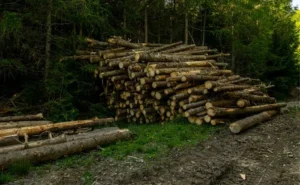



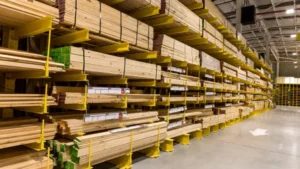


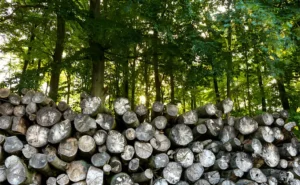

Leave your comment